How to Inspire, Measure, and Improve Customer Loyalty


In a world where your competitors are only a click away, customer loyalty is the new marketing.
Today’s customers have access to an endless amount of information about your business, and research shows that they’re ready and willing to stick with companies that go above and beyond to create a fantastic customer experience.
This guide will look at how the most beloved brands are able to instill the kind of legendary loyalty that keeps them ahead of the pack. You’ll walk away understanding what customer loyalty is, why it's important, what you can do to increase loyalty, and how to create measurable systems to track your progress.
What is customer loyalty?
Customer loyalty is a measurement of the likelihood that customers will continue doing business with your company. It’s the result of their overall satisfaction with not only your products and services, but also at every touchpoint in the customer journey.
Customer loyalty helps you build closer ties with your customers. When you improve the experience a customer has with your brand, you become more than just another website or online store. They trust you with their money because you give them something of value in return.
The right customer loyalty tactics help you form these longer-lasting relationships, which, in turn, can increase customer lifetime value, help with new customer acquisition, and boost revenue. Loyal customers recommend your company to others, stick around longer, and spend more money with your business.
How to measure customer loyalty
Much like you should always be thinking ahead to determine what products to sell, how to optimize your business, and how to serve your customers better, customer loyalty can help forecast future activity to improve profitability.
Below are four different ways to measure customer loyalty that you can use to determine if your company needs to take steps to earn more loyal customers and brand advocates.
1. Net Promoter Score (NPS)
One way to track customer loyalty is by looking at customer satisfaction levels. You can use an NPS survey to find out how likely customers are to recommend your products/services to others.
NPS surveys use similar wording and an 11-point scale like the CloudApp example below:
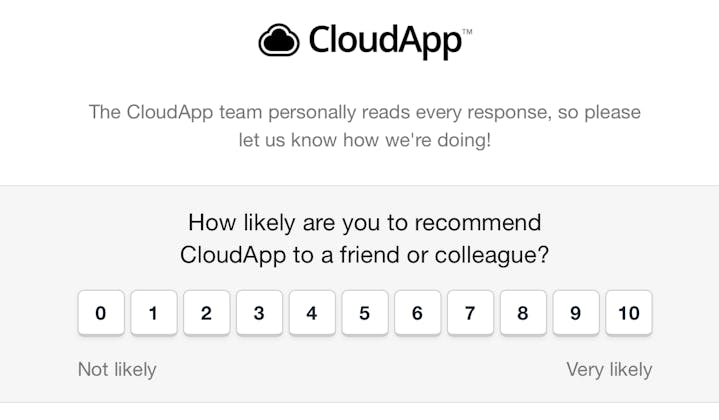
Those who answer with a 9 or 10 are considered “promoters” — loyal and happy customers. Those who answer 7 or 8 are considered “passive” — happy, but less likely to recommend your business. Customers who respond with a 6 or below are known as “detractors” — people who are likely not referring your brand to anyone.
2. Customer Loyalty Index (CLI)
The Customer Loyalty Index is used to track customer loyalty over time. It incorporates similar elements of an NPS survey but also collects information about repurchasing and upselling.
A CLI survey uses a 6-point scale, with 1 standing for “Definitely Yes” and 6 standing for “Definitely No.” It helps you find out:
How likely someone is to recommend your brand.
How likely someone is to buy from you again in the future.
How likely someone is to try out other products and services.
You calculate CLI by taking the average score of all your responses using the following point system:
1 = 100
2 = 80
3 = 60
4 = 40
5 = 20
6 = 0
This survey gives you an idea of how likely a customer is to positively recommend your brand. It also tells you more about how likely they are to become a repeat customer.
By sending out a CLI survey from time to time, you can track changes and make smarter decisions when it comes to your customer loyalty strategy.
3. Customer lifetime value (CLV)
Customer lifetime value is one of the leading indicators of customer loyalty for SaaS and ecommerce. It looks at the total revenue an average customer generates over their lifetime.
There are many ways to calculate customer lifetime value, but one simple formula you can use is:

For example, let’s say you’re a SaaS brand who makes $2,500 each year per customer. The average customer relationship lasts seven years, and it costs $3,000 to win each customer. Your CLV formula would look like this:
($2,500 * 7) - $3,000 = $14,500
A higher CLV means you have more loyal customers.
CLV can help you measure the impact of marketing campaigns, focus your initiatives on creating loyalty objectives, and, of course, manage customer relationships better to increase the profitability of your business.
4. Repeat purchase rate
How many of your customers are making repeat purchases? When you track how many purchases new and returning customers make, you can monitor the retention rate in your business. You can use the repeat purchase rate to see how customer loyalty measures over time.
The easiest way to figure out repeat purchase rate is:

You can set the time frame to be monthly, quarterly, or yearly. Overall, having a good idea of your repeat purchase rate can help you determine how loyal your customers are and how likely they are to make future purchases from your business.
How to build customer loyalty
If you've taken the time to measure your existing customer loyalty and you’ve determined that there's a lot of room for improvement, consider adopting these five strategies for building customer loyalty.
1. Raise the bar on your customer service
Bad customer service can affect brand loyalty and your bottom line. Businesses both big and small lose $75 billion per year due to poor engagements between customers and staff. Strive to be better than that.
Customers say consistently good customer service is the main reason they stay loyal to brands, with nearly 70% of consumers spending more money to do business with a company that delivers great service.
It's hard to go toe-to-toe with larger, more well-funded companies when it comes to marketing and customer acquisition. So while you may not be able to out-spend your competitors, great support is the one competitive advantage that most enterprise companies just can’t copy.
Paul Graham states that small businesses should do things that don’t scale, particularly when it comes to taking care of customers:
“Your first users should feel that signing up with you was one of the best choices they ever made. And you in turn should be racking your brains to think of new ways to delight them.”
That’s one advantage of being small: You can provide a level of service no big company can.
There are endless ways to improve customer service at your company. Start by making sure your team's using the right tools, building a company culture centered around caring about customers, paying your agents a rate that's appealing to professionals, and making it easy for customers to request support.
Customer service tips by business type and industry
2. Promote shared values with your ideal customers
So what is brand loyalty really about? According to research conducted by the CEB, there are three common myths around customer loyalty that need to be addressed:
| Myth | Reality |
|---|---|
Customers want to have relationships with brands. | 77% of customers don’t care to have relationship with brands. |
An increase in interactions is always the answer. | Your customers can suffer from information overload. |
Loyalty comes from regularly engaging with a brand. | Brand loyalty starts with shared values. |
All of these myths are important to know, but let's take a closer look at the last point. According to CEB researchers Freeman, Spenner, and Bird:
"Of the consumers in our study who said they have a brand relationship, 64% cited shared values as the primary reason. That's far and away the largest driver. Meanwhile, only 13% cited frequent interactions with the brand as a reason for having a relationship.”
Having shared values, similar opinions, or a common philosophy on a particular issue was the only significant driver for brand relationships with the few consumers who wanted one.
The majority of your customers don't care about having a close relationship with your brand; those who do care more about the things you stand for than how often you engage with them.
The most beloved brands have developed their following through a strong stance on issues in their industries. For example, TOMS shoes champions their One for One movement, which gives a pair of shoes to a needy person in the world for each purchase.
What your company stands for doesn't have to be lofty, but you have to plant your flag on an issue that matters. Communicating your brand's higher purpose outside of making money is the way to create a genuine connection with customers.
3. Create a helpful community for customers
In a world where customer experience is overtaking price and product as a key brand differentiator, you want to make sure customers are continually having good interactions with your brand.
These interactions aren’t limited to your onboarding process, website, or your checkout process — they're everywhere a customer interacts with your brand.
Meet the brand community: a group of people who come together online under the brand. Members in these groups can be both customers and prospects, sharing tips, insights, wins, questions, and experiences with each other — all with little interaction from the brand itself.
For example, the ManyChat community on Facebook has over 91,100 active members who interact with each other daily. Members also get exclusive access to the ManyChat team, including CEO Mike Yan and Head of Content Fara Rosenzweig.
Trilce Jirón Garro, Founder of TBS Marketing and long-term ManyChat community member, describes the experience:
“You have people who you can talk to about how to grow your business with ManyChat or even about your personal life. If you’re having concerns, you have friends there to help you. They have the same knowledge and experiences as you.”
You can build your own community site or start a community for free on Facebook. Then, give people a reason to join, such as insider access to product drops, special pricing for events, training, etc.
4. Build relevant partnerships with other brands
Strategic partnerships with relevant brands can help your business improve your customer loyalty strategy. It goes beyond providing unexpected and exclusive experiences and gives you access to new customer data, new technologies, and opportunities to capture new revenue.
The key to brand partnerships is to think beyond the obvious partnership — like a corporate grocery store partnering with local farmers to increase awareness and sales. You want to find a partnership that keeps your customers coming back for more.
Harry’s, a men’s grooming and shaving supplies online retailer, runs an active partnership program to create unique experiences associated with the brand and build affinity with new audiences around the world.
If you take a look at their website, you’ll find an ongoing list of limited-time products they’ve made with global brands, including Tom Ford, Heyday, Highsnobiety, and WANT Les Essentiels.
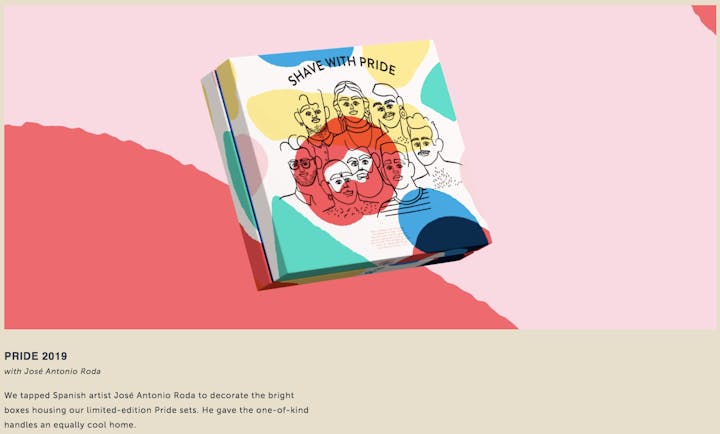
SaaS products are no stranger to strategic brand partnerships, either. If you’ve kept up with the news recently, you may have noticed the Cole Haan and Slack shoe collaboration. Now, anyone can rock branded, Slack-colored shoes around their home office.
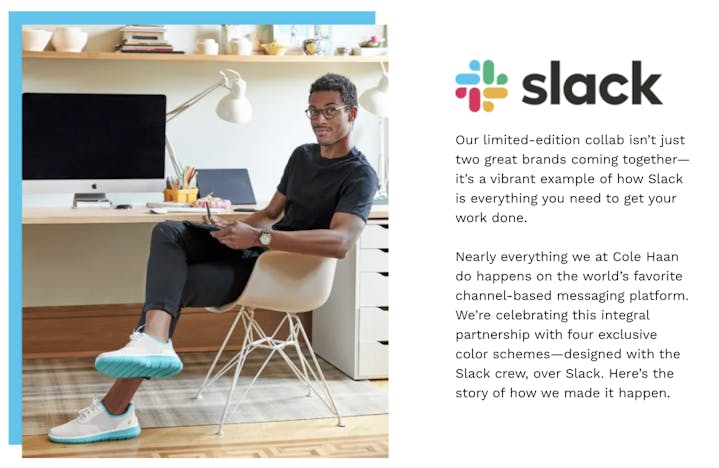
5. Create a loyalty program
You’re probably a member of a few loyalty programs: your credit card, gas station, favorite online store, the grocery store. Whether these programs are punch cards in your wallet or online, they probably all give you a reason to buy often from the retailer.
A loyalty program can help you:
Drive daily engagement.
Acquire new customers or reactivate lost customers.
Reward customers based on their spending.
Increase overall customer satisfaction.
Customer loyalty programs can help you understand what really matters to your customers and connect with them through personal moments like holidays, birthdays, anniversaries with your brand, and other key moments in order to reduce the risk of churn.
4 great customer loyalty program examples
If you need some inspiration for creating a loyalty program for your business, consider the four great customer loyalty program examples below.
1. Blume
Direct-to-consumer retailer Blume gives shoppers the opportunity to earn Blume Bucks — points that can be redeemed for free gifts.
Blume customers can earn points for making purchases, following the brand on social media, and writing reviews. Customers can also reach Blumetopia — a perk that provides access to special promotions — by climbing membership levels.
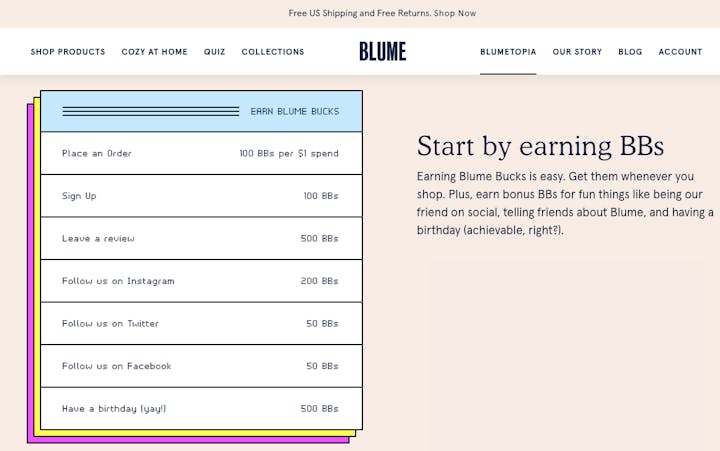
2. O2
O2 is the second largest mobile services provider in the UK. Their acclaimed customer loyalty program lets pay-as-you-go customers earn cash back every time they add additional minutes to their accounts — up to 10% every three months.
Customers can use their rewards to add more minutes to their accounts or to enter prize drawings, purchase show tickets before they're available to the general public, and more.
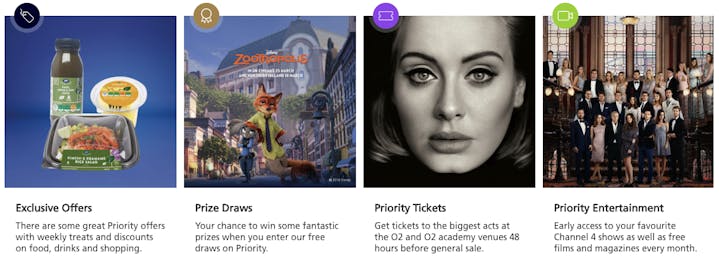
3. Sephora
Cosmetics company Sephora’s Beauty Insider program grants return customers three levels of benefits — from birthday gifts to special access to a private hotline — based on how much they spend in a calendar year.

4. Lyft
The rideshare company Lyft offers a plethora of different loyalty benefits in its program. Customers can earn travel rewards through exclusive partnerships with brands like Delta or Hilton, earn free rides for referring new riders, and more.

Customers can also sign up for Lyft Pink, a membership program with access to perks like ride savings, priority airport pick-ups, and surprise offers.
Improving customer loyalty in your business
Highly informed customers are no longer boxed in to choosing a business because it’s their only option. Today, it’s easier than ever to find practically unlimited alternative options for everything.
This is why scale, user acquisition, and marketing can’t be the only baskets in which you keep all your eggs. Marketing may get your name out there, but will people stick around? Will first-time customers turn into loyal, long-term advocates?
You’ve seen the data that shows this matters if you want your business to thrive; now you need to take what you’ve learned here and use it to create a customer experience that not only delights customers but also gets them talking about you.
There’s never been a better example in business of a win-win situation. As entrepreneur and author Marie Forleo says: “Caring is the most powerful marketing strategy there is.”
When you take care of customers, they will, in turn, allow your business to thrive.

